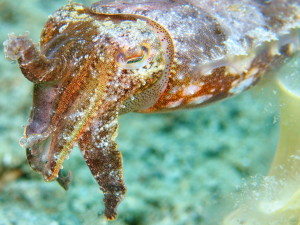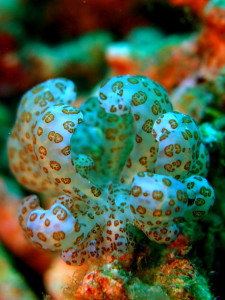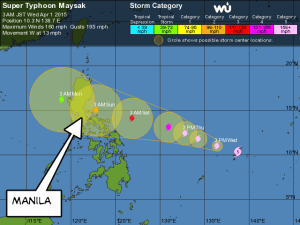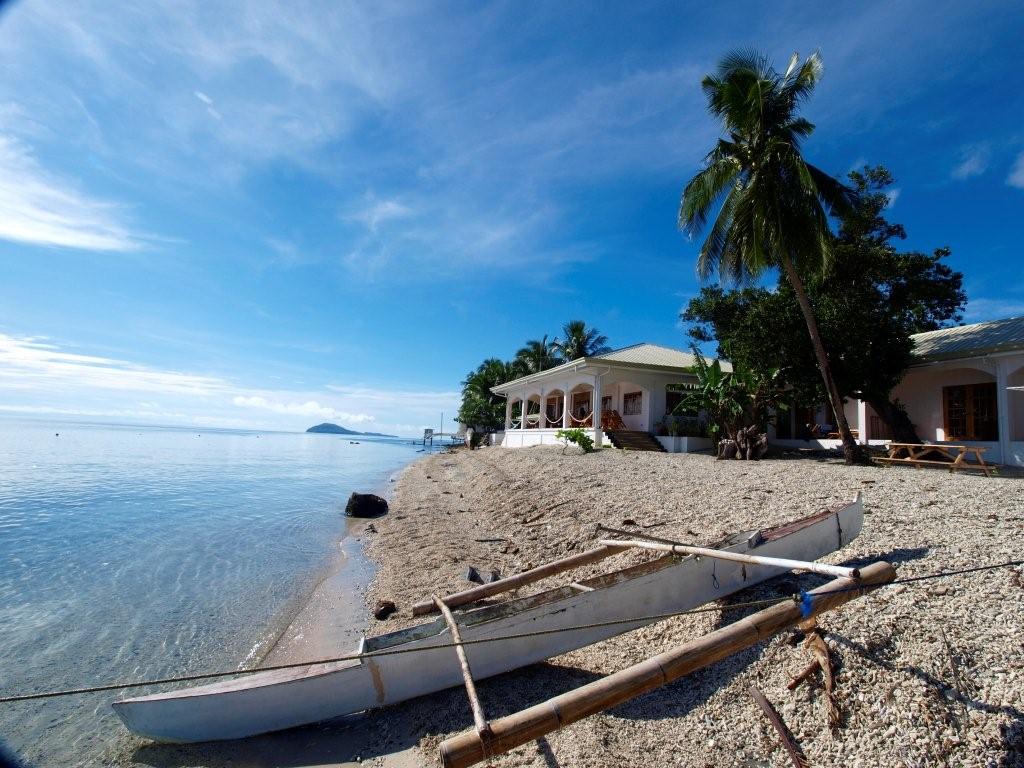News
Mat’s Philippines Trip 2015: Part 2

Read Part 1 here.
A Storm in a teacup
Checking the weather isn’t something that I do religiously; even when I plan a trip abroad I maintain a rather laissez-faire attitude towards the matter. That was until last month when just a week before we were due to set off for the Philippines a storm of biblical proportions was making its way towards Manila, having just wreaked havoc in the little known region of Truk Lagoon. Although I may be climatologically challenged, it didn’t take long for me to work out that a category 5 cyclone with winds exceeding 160mph is something not to be trifled with – it would go down on record as one of the strongest storms ever for the time of year, and to make matters worse it was expected to make contact with Manila in the early hours of Sunday morning… just as we were due to arrive ourselves. It would be nice to continue with the ecclesiastical theme that I started with and claim that I prayed to the Gods for some miracle, but in truth my interest in the man upstairs is on par with my knowledge of all things meteorological and so instead I crossed as many metaphorical fingers and toes as I could and hoped for the best.
Then I checked.
Again… and again… each day I checked the weather predictions for updates on the only severe storm on the planet at that time. Nudging further north each day I didn’t dare get my hopes up. At the start of the week the predictions were for Cyclone Maysak to have calmed down a tad; a mere category 2 with winds of just 100mph by the time it plans to hit Manila and ruin everybody’s morning. I wasn’t sure but I feared that aeroplanes still don’t fare well in these conditions and even if we were to take off from London I was pretty confident that landing in such a gust would be out of the question… and if it was questionable then I really didn’t want to be on board to find out the answer. When our departure day finally arrived however all of our worrying had been in vain; the enormous typhoon that caused us to fret just days ago had reduced to a tropical storm and decided not to visit Manila at all, no doubt concerned about the dreadful traffic the capital is known for.
Hop 1- Sogod Bay
To say you have been to the Philippines is rather vague. It’s such a vast country of more than 7100 islands it really is possible to return year after year and still not sample all that is on offer. That’s why it’s best (I believe) to make the most of your time on the ground and plan an island hopping itinerary. In reality, these ‘hops’ can sometimes take up your whole day and include a short flight but it really is worth the effort. Upon arriving in Manila we made our way to the domestic terminal and boarded our flight to a region called Southern Leyte. Fortunately we arrived in the capital at 0100 and so the usual buzz – or horrendous traffic – that the city is known for did not pose a problem. Later that morning we arrived at Tacloban airport with just a three hour drive left ahead of us. Just three more hours and our mammoth journey of 35 hours door to door would be complete.
In November 2013 another cyclone (‘Typhoon Haiyan’ known locally as Typhoon ‘Yolanda’) was the most fatal storm to have ever hit the Philippines; furthermore the city of Tacloban, home to more than 220,000 people, suffered more loss of life than any other area in the country. As we landed at Tacloban airport the devastation was still present as there was not so much as a complete roof on what’s left of the small building, let alone a customs desk. As we walked from the plane our bags were clear to see on one side of a wall of what could be described as a shack rather than an airport terminal. We patiently waited for a man to place them on a rather inane baggage belt fed through to the other side of the wall and made our way outside to our driver.
The destruction that Yolanda left behind less than two years ago is clear to see. Houses all around are missing roofs and areas of forestation have been ripped to pieces; this part of the country is very much still on the mend. Sad as this is I later learned more cynical views that the clean up process would be further along were it not for some of the more obstructive and awkward locals in the area. Even more troubling is the assertion that much of the damage might have been avoided if mangroves had not been uprooted and houses built illegally in their place. This is a poor country though with fishing and agriculture being a primary source of income for those that live in the more remote places – getting back to business as usual was never going to happen overnight.
The next 3 nights were to be spent near the town of Padre Burgos at Sogod Bay Dive Resort. I had spent a month in Napantao previously which is across the other side of Sogod Bay – clearly visible but over an hour away by boat or more than twice as long by motorbike through the hilly terrain. The house reef at Sogod Bay Divers is nice enough for some easy access shore diving but it doesn’t come close to the reefs on the other side of the bay in Napantao and Sonok. Fortunately though, we were able to venture to Sonok for a day when we were on a quest to swim with the whale sharks which are common to the area (read about my first experience doing this here). The Sonok Point dive site is beautifully rich with lots of fish and an abundance of soft corals, rhythmically swaying in the gentle current. Diving on this side of the bay is well worth the boat ride.

 We spent more than 2 hours searching for whale sharks after our morning dive to no avail. My girlfriend Sam was the only person out of the 8 of us on board who had yet to see one before today and it was looking like she might return to shore with that record intact – much to her dismay. All of a sudden one of the spotters began whistling and pointing and so we donned our fins and mask and perched on the edge of the boat, poised and ready to take to the water for a glimpse of one of the most sought after and admired fish in the world. As we leapt into the sea, a shark measuring at least 6 meters was heading right for us just a few meters below. This is about as big as they get in this region and so we were incredibly lucky to get such a close encounter with a great specimen. All in all we had four separate encounters with two different whale sharks that day and Sam was able to tick a wonderful experience off her bucket list. The Whale Shark encounters from Sogod Bay are less publicised than other well known destinations such as Donsol and Oslob and as a result the experience is less crowded, more natural and – in my opinion – more special.
We spent more than 2 hours searching for whale sharks after our morning dive to no avail. My girlfriend Sam was the only person out of the 8 of us on board who had yet to see one before today and it was looking like she might return to shore with that record intact – much to her dismay. All of a sudden one of the spotters began whistling and pointing and so we donned our fins and mask and perched on the edge of the boat, poised and ready to take to the water for a glimpse of one of the most sought after and admired fish in the world. As we leapt into the sea, a shark measuring at least 6 meters was heading right for us just a few meters below. This is about as big as they get in this region and so we were incredibly lucky to get such a close encounter with a great specimen. All in all we had four separate encounters with two different whale sharks that day and Sam was able to tick a wonderful experience off her bucket list. The Whale Shark encounters from Sogod Bay are less publicised than other well known destinations such as Donsol and Oslob and as a result the experience is less crowded, more natural and – in my opinion – more special.
I feel I may have been unfair in my earlier assessment of the local diving at Sogod Bay. True enough, the reef itself is not on par to what you’ll find in Napantao and Sonok but there are still some critters to be found. Just a short 5 minute drive down the road and you’ll stumble across ‘little Lembeh’. If you have been to the muck diving capital of the world in Lembeh Strait in Indonesia then you would be right to roll your eyes at this attempt to cash in on a lucrative name. That being said, although I didn’t see my first mimic octopus (one day!) I did see a cuttlefish, mantis shrimp and two different kinds of ornate ghost pipefish. Searching for critters in the sand amongst the odd coral bommie is not everyone’s cup of tea, and if you dive without a camera then doing this for 75 minutes might be enough to send you into a submerged slumber – at least that’s what Sam tells me – but for critter enthusiasts there’s certainly enough to keep you entertained.

 The main attraction for me was the Padre Burgos Pier dive. I’d heard a lot about this dive site and since I was unable to see it on my last trip I was all guns blazing this time around for what I hoped would turn out to be my most memorable night dive to date. What had I heard about this dive that had me in a state of fervent excitement? I’d heard that it had a steep and slippy entry point and that it was rather grimy and littered with a smattering of broken glass bottles and the odd floating crisp packet; sign me up I hear you say. After the precarious pre-dive clamber down the side of the pier wall at nightfall, after the not so elegant wading through rocky shallows doing our utmost to remain upright and not fall face first in the mucky water, after all of this what waits beneath is a throng of critters going about their after hours business. As we descended through a layer of mulshy surface water the visibility beneath was surprisingly good – really good in fact. It wasn’t long before we were treated to tiny scorpion fish, pipe-horses, dancing juvenile harlequin sweetlips, cuttlefish, sea-horses and other bizarre creatures that I’m unable to name. I’m pleased to report that we saw two Octopus (my all time favourite animal) darting underneath the structure of the pier and did our best to encourage an unwitting fish over the mouth of a lurking star-gazer in the rather morbid expectation of watching it get devoured. No such luck. Most of the time we were scouring around in the shallows and we didn’t spend as much time actually beneath the pier itself as I had anticipated but all in all it turned out to deliver quite the experience. In fact even Sam – who was less than enthralled by her ‘little Lembeh’ experience – thoroughly enjoyed the night dive at Padre Burgos Pier, so I’d encourage you not to let it’s initial arguably unpleasant appearance put you off and just take the plunge.
The main attraction for me was the Padre Burgos Pier dive. I’d heard a lot about this dive site and since I was unable to see it on my last trip I was all guns blazing this time around for what I hoped would turn out to be my most memorable night dive to date. What had I heard about this dive that had me in a state of fervent excitement? I’d heard that it had a steep and slippy entry point and that it was rather grimy and littered with a smattering of broken glass bottles and the odd floating crisp packet; sign me up I hear you say. After the precarious pre-dive clamber down the side of the pier wall at nightfall, after the not so elegant wading through rocky shallows doing our utmost to remain upright and not fall face first in the mucky water, after all of this what waits beneath is a throng of critters going about their after hours business. As we descended through a layer of mulshy surface water the visibility beneath was surprisingly good – really good in fact. It wasn’t long before we were treated to tiny scorpion fish, pipe-horses, dancing juvenile harlequin sweetlips, cuttlefish, sea-horses and other bizarre creatures that I’m unable to name. I’m pleased to report that we saw two Octopus (my all time favourite animal) darting underneath the structure of the pier and did our best to encourage an unwitting fish over the mouth of a lurking star-gazer in the rather morbid expectation of watching it get devoured. No such luck. Most of the time we were scouring around in the shallows and we didn’t spend as much time actually beneath the pier itself as I had anticipated but all in all it turned out to deliver quite the experience. In fact even Sam – who was less than enthralled by her ‘little Lembeh’ experience – thoroughly enjoyed the night dive at Padre Burgos Pier, so I’d encourage you not to let it’s initial arguably unpleasant appearance put you off and just take the plunge.
The crew at Sogod Bay Dive Resort went above and beyond to ensure we had a great stay. If you’re looking for soft white sand and a bar serving happy hour cocktails then this probably isn’t the place for you – but if sightings of the world’s biggest fish coupled with some great critter diving, peaceful surroundings and friendly smiles float your boat then perhaps you’ll consider making the trip to Southern Leyte. After just three nights it was time for us to pack our bags and make tracks to our second destination; and speaking of soft white sand and a happy hour bar, we hoped that’s what the Philippines had in store for us next… in Malapascua.
To be continued…
Mat is a travel consultant for Dive Worldwide.
Gear News
Introducing the TR-80, IR-50 and CS-30 Regulators from DYNAMICNORD

Whether you are a beginner or a professional diver – with the three new main regulators from DYNAMICNORD, everyone will find their favourite regulator. They all look super stylish.
Excellent performance with the TR-80
Quality and performance are the be-all and end-all for regulators. It is not for nothing that the TR stands for Tec Reg. The innovative design of the TR-80 guarantees absolute reliability – even in ice-cold waters.

Perfect breathing effort at 0.8 J/l / certified for diving in waters below 10 degrees / structural design made of solid brass for best cold protection / membrane-compensated design with dry seal of the first stage / reduced exhalation effort thanks to optimized exhalation membrane and bubble deflector / adjustable Venturi (dive/predive) and adjustment knob for individual inhalation comfort / innovative design of the front cover prevents free-flow in strong currents or when diving with scooters / design made of sandblasted brass, matt chrome finish / 2 HP and 4 LP outlets / mouthpiece made of high-quality, anti-allergic silicone for maximum comfort.


Amazing underwater adventures with the IR-50
The IR-50 is the top regulator for advanced and experienced divers. Natural breathing is the essence of this regulator.

Ideal breathing effort at 0.8 J/l /certified for diving in waters below 10 degrees / compensated membrane / adjustable venturi (dive/predive) and adjustment knob for individual inhalation comfort/ outlet valve and deflector for minimum exhalation effort and reduction of bubbles on the face / design made of sandblasted brass, matt chrome finish / 2 HP and 4 NP outlets / mouthpiece made of high-quality, anti-allergic silicone for maximum comfort.


The Workhorse – our CS-30
For diving centres and diving beginners – the workhorse stands for strong construction, reliability and robustness. Perfect for your training.

Optimal breathing effort at 0.8 J/l /recommended for diving in waters above 10 degrees / non-compensated piston / adjustable venturi (dive/predive) / outlet valve and deflector for minimum exhalation effort and reduction of bubbles on the face / design made of sandblasted brass, matt chrome finish / 1 HP and 3 NP outlets / mouthpiece made of high-quality, anti-allergic silicone for maximum comfort.


Octopus OP-30
The OP-30 is the ideal addition to all DYNAMICNORD regulators. It is identical in construction to the CS-30.

The TR-80, IR-50, CS-30 (DIN & INT) regulators and the Octopus OP-30 are available from DYNAMICNORD dealers and in the online store.
DYNAMICNORD – Your Outdoor Companion.
Marine Life & Conservation
Paul Watson Released as Denmark Blocks Japan’s Extradition Bid

Renowned anti-whaling activist Paul Watson has been released from custody in Greenland after spending five months in detention. Denmark’s Justice Ministry rejected Japan’s request for his extradition, citing insufficient guarantees that his time already served in custody would be credited against any potential sentence.
The 74-year-old Canadian-American was arrested on July 21 in Nuuk, Greenland’s capital, when his ship docked to refuel. His arrest was based on a 2012 Japanese warrant related to a 2010 encounter in Antarctic waters. Japan alleged Watson obstructed operations and caused damage to a whaling research ship during efforts to disrupt illegal whaling. Watson has consistently denied these claims, maintaining his commitment to marine conservation.
Denmark, which oversees extradition matters for Greenland, concluded that while the legal conditions for extradition were met, the lack of assurances from Japan regarding time-served credit made extradition untenable.
In a video shared by his foundation, Watson expressed gratitude and relief, saying, “After five months, it’s good to be out… and good to know they’re not sending me to Japan.” He added that the most difficult part of his time in custody was being separated from his two young sons.
Watson is a pioneering figure in marine conservation, known for founding the Captain Paul Watson Foundation in 2022 after decades of activism with the Sea Shepherd Conservation Society. His bold efforts to defend marine life have earned him widespread support, including from celebrities and conservationists. His work has also been featured in the acclaimed reality TV series Whale Wars.
Watson’s lawyer, Jonas Christoffersen, praised the decision, stating, “We are happy and relieved that Paul Watson is now free.” He added that Watson is eager to reunite with his family and continue his vital work.
The arrest occurred while Watson’s vessel, the M/Y John Paul DeJoria, was en route to the North Pacific with a team of 26 volunteers to intercept a Japanese whaling ship. His foundation described the arrest as politically motivated and emphasized that Watson’s actions were focused on ending illegal whaling practices.
Japan resumed commercial whaling in 2019 after leaving the International Whaling Commission, asserting that whale meat is a cultural tradition. Conservationists, however, continue to challenge these practices, highlighting their impact on marine ecosystems.
Despite the challenges, Watson remains steadfast in his mission to protect marine life and bring attention to whaling practices. His dedication to ocean conservation has made him a globally respected advocate for the environment.
-

 News2 months ago
News2 months agoIconic SS United States to become the World’s Largest Artificial Reef
-

 News3 months ago
News3 months agoBook Review – 52 Assignments: Underwater Photography
-

 Gear News3 months ago
Gear News3 months agoDYNAMICNORD – New German diving brand enters the British market
-

 News3 months ago
News3 months agoExploring Cenote El Pit: A Diver’s Dream
-

 Gear News3 months ago
Gear News3 months agoTry BARE drysuits (and maybe even win one!) this Friday with Sea & Sea at North West Dive Fest
-

 Marine Life & Conservation3 months ago
Marine Life & Conservation3 months agoBook Review: Coral Triangle Cameos
-

 Blogs2 months ago
Blogs2 months agoDive the Egyptian Red Sea this Autumn with Regaldive
-

 News3 months ago
News3 months ago2024 Ocean Art Underwater Photo Competition Announced




















